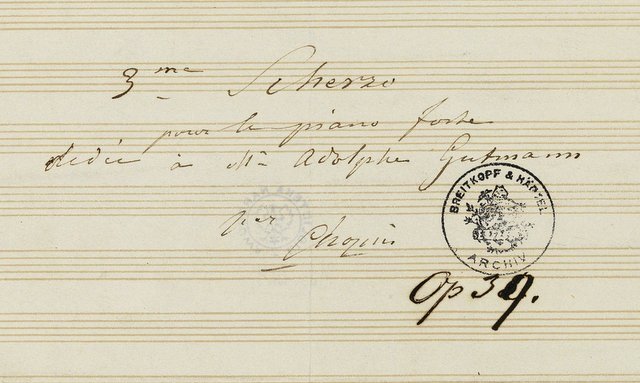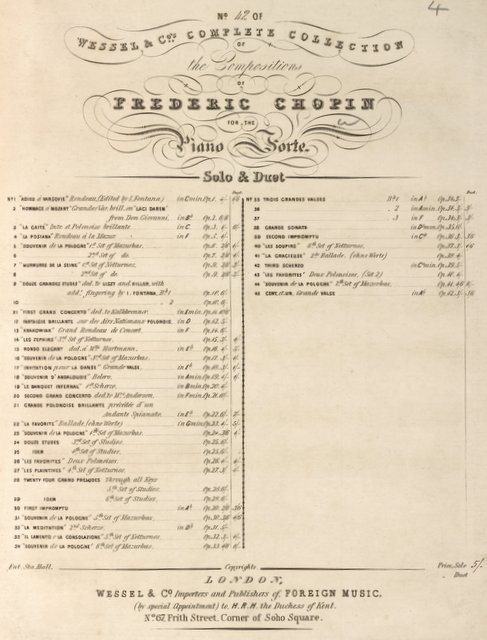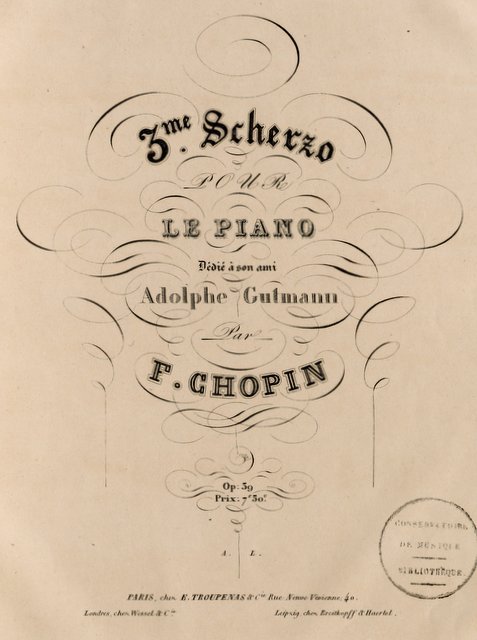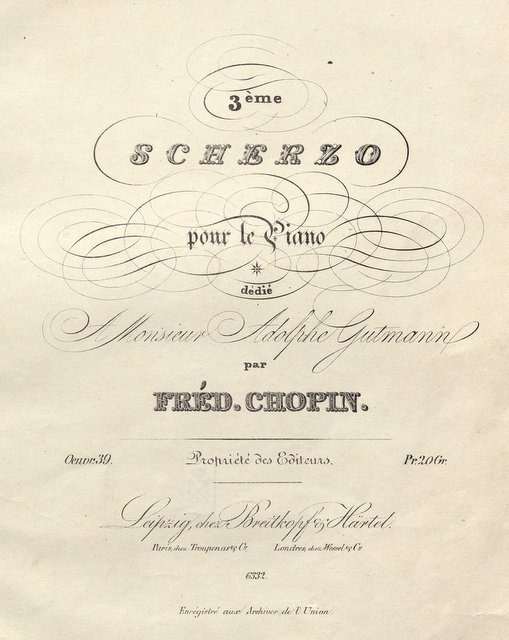



GC - Gutmann's copy

Stichvorlage copy for Breitkopf & Härtel prepared by Adolf Gutmann on the basis of a lost autograph.
EE - English edition
FE - French edition
Filiation of sources
The filiation and chronology of the sources for this Scherzo are fairly difficult to establish. A detailed comparison of various deviations found in extant sources allows the following conclusions to be drawn:
-
FE, EE and GC were all based on manuscripts; both GC (certainly) and FE (most probably) had autographs as their base texts, yet one can suspect that those were two different autographs. The base text for EE was the autograph on which GC was based, or a lost copy of that autograph;
-
There are very few corrections visible in extant sources; therefore, most differences must have originated from corrections made in lost manuscripts. No conclusive statements about their chronological order are possible. The logical sequence of the publishing process requires that we consider the composer’s proof copy of FE1 as the last stage at which Chopin was personally involved in shaping the text of the Scherzo; meanwhile, stylistic criteria point to EE as conveying the earliest version of the work.
The filiation of sources presented in the diagram is just one of several possible options, yet in our opinion the most probable one due to the similarity with the filiation of sources for Polonaises Op. 40 that were being prepared for print at the same time as the Scherzo. The filiation of the Polonaises is much better documented, as three out of four postulated manuscripts have survived, including two autographs.
Principles behind the main text of the Scherzo in C sharp minor Op. 39
We have adopted FE, the latest source controlled by Chopin, as our basic source. However, bearing in mind the somehow less-than-careful manner in which both FE and Chopin’s autograph [A2] that served as base text for FE were prepared, we compare them with GC and EE. Those two sources give us an independent, largely authentic picture of the composition. We take into account one correction entered into both teaching copies.



